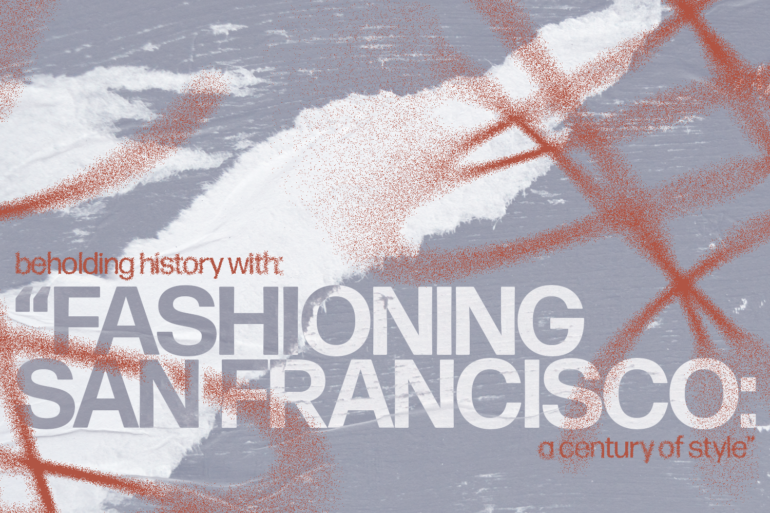Over the break, I had the pleasure of visiting The de Young Fine Arts Museum of San Francisco’s exhibit, “Fashioning San Francisco: A Century of Style”. This thoughtfully curated experience showcases historical fashion masterpieces from the 20th and 21st centuries. Designers whose work is displayed here include Christian Dior, Karl Lagerfeld, Rei Kawakubo, Yohji Yamamoto, Vivienne Westwood, Christopher John Rogers, Alexander McQueen, and many other great talents.
The exhibit began on the first floor with an augmented reality experience. It’s a small, circular hall with three different AR mirrors. It’s a filter (like you would see on Snapchat or TikTok) that puts clothes on your body. I tried out the first mirror which put me in “Soirée de Paris”, a 1995 dress by Yves Saint Laurent. This amusing experience was a small glimpse into the great works of art that I was about to see upstairs.
The main exhibit had famous garments from fashion history displayed on white, stylized mannequins with hairstyles corresponding to their respective decades that almost looked as if they were made out of paper mache. These hairstyles enhanced the storytelling and education for the viewers by humanizing the mannequin and putting them into a historical context without distracting them from the garments.
The beauty of seeing the garments in person is observing the fine details, most of which were done completely by hand. The small placards explained the techniques used to compose them. What I read and saw from the particularly older garments was especially impressive considering talent and quality like that is rare today. An example that stood out to me was the “Delphos Dress, Wrap, and Belt” designed in 1920 by Mariano Fortuny, a Spanish artist. The dress is made with pleated silk satin weave, silk cord, and glass beads. The wrap and belt are silk, printed with pigment from metal powder. While the design appears relatively simple, the techniques used to achieve the very fine pleating that gives the dress such a flattering drape are extraordinary. Upon further research, I found that the dress is pleated with about 450 folds and is totally adjustable, an inspiration taken from the Greek chiton. This made me consider the cycle of historical inspiration in fashion that is never-ending.
The main event of the whole exhibit was the 1949 Dior sister gowns, Junon and Venus. I can honestly say that these gowns together are one of the most beautiful sights I’ve seen in person. Junon is still fresh in our minds as Anya Taylor-Joy wore a version of this at The Oscars. According to the placard, Junon is comprised of “silk bobbin net, silk gros de Tour, plastic sequins, gelatin sequins, and nylon horsehair”. The ombre petal design is inspired by peacock feathers, the favorite bird of the dress’s namesake, The Roman goddess of marriage and fertility. While this is the recorded inspiration, I believe the petal design also speaks to Christian Dior’s affinity with flowers and how he always wanted to make women look like them. While Junon is the darker and more visually heavy dress, Venus is a lighter juxtaposition that gives an airy feel of weightlessness (even though, I’m sure, it’s quite heavy). While Junon is more talked about and referenced in the fashion world, I believe Venus is highly underrated. Venus undoubtedly lives up to its namesake, the Roman goddess of love and beauty, who was born from the sea, fully developed and perfect. The petal-like flounces on the skirt are said to resemble shells as the beach is the birthplace of the goddess. The dress glitters like the ocean. It is perfectly romantic and feminine.
Overall, I would highly recommend this exhibit to anyone interested in fashion, history, or culture. Seeing works of art up close and personal gives you a sense of the craftsmanship that went into them in ways you can never fully capture on any screen. Being able to see such highly regarded moments in fashion history is an enriching experience that I will always remember.
Word by Mishi Ali.
Graphic by Evan Skovronsky.

